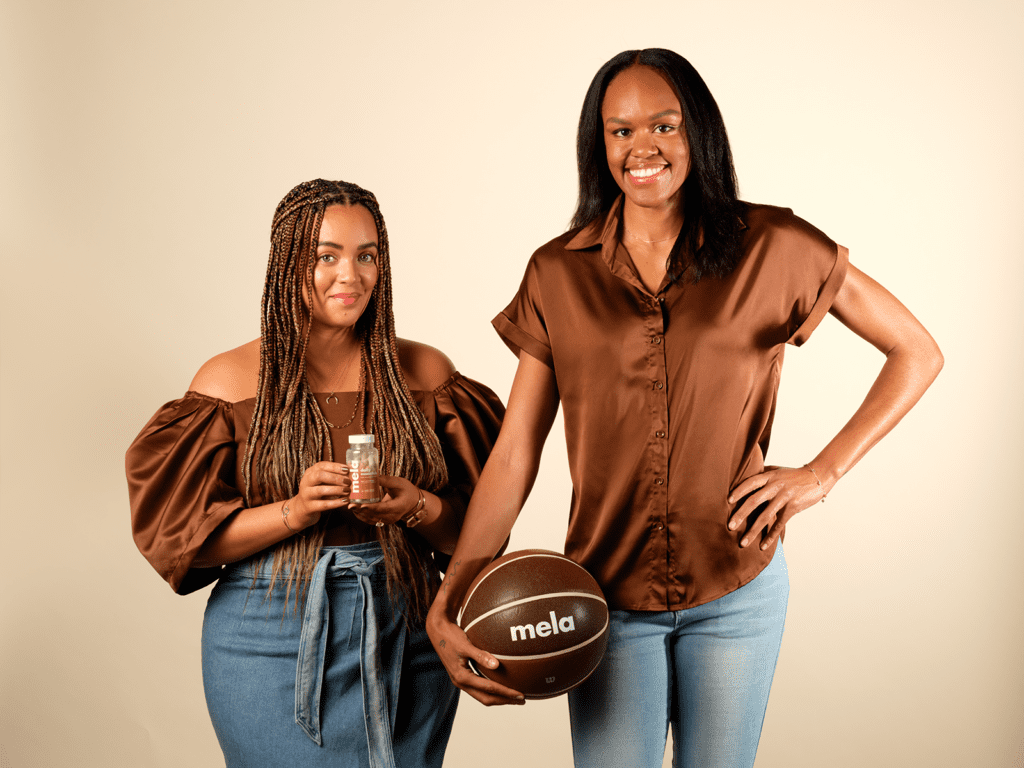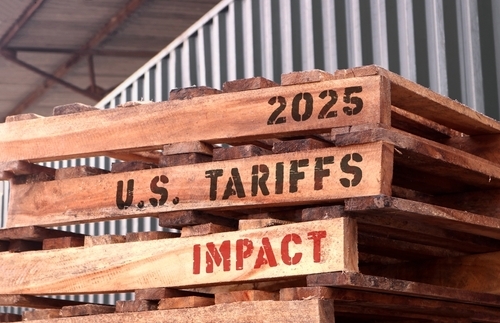WNBA stars Azurá Stevens and Dana Evans will help open doors for Black-owned Mela Vitamins’ retail expansion and drive more attendance at its in-person events. Community members as spokespeople are a key marketing tactic for the brand, which sells a multivitamin for women of color.
Black-owned vitamin brand Mela Vitamins is already enjoying a revenue boost after adding new investors to its roster: WNBA stars Azurá Stevens and Dana Evans.
Since Mela announced the two athletes as brand ambassadors and investors in January, the brand’s revenue has increased nearly 50%, said founder and CEO Ashley Harmon.
The goal of the partnership is to have Stevens and Evans use their followings to help educate consumers about Mela’s product — a multivitamin targeted to women of color ages 25-50. The multivitamin has double the amount of vitamin D and four-times the amount of B12 compared with typical multivitamins on the market to address these common deficiencies in women of color, Harmon said.
“Melanin protects our body from the sun, but it also limits our ability to absorb vitamin D from the sun, which is why 80 to 90% of women of color are vitamin D deficient,” she said. This deficiency is linked to double the rates of heart disease, autoimmune disorders and type 2 diabetes, she added.
How Azurá Stevens and Dana Evans will promote Mela
Stevens and Evans will be promoting the products on social media, plus contribute their wellness and health perspective on Mela’s blog and in email marketing, which has about 15,000 subscribers, Harmon said.
In addition, they will attend Mela’s in-person events and any in-store activations. Currently Mela sells direct on its website, Amazon.com, Target.com and in a few brick-and-mortar retailers in Los Angeles and New York.

In Los Angeles, were Mela is based, the brand hosts free workouts and health clinic days where consumers can chat with a doctor or receive a health screening. The goal is to have a 20-40% higher attendance rate for its events when Stevens or Evans will be present, Harmon said.
Mela attributes about 20-25% of its revenue to in-person events, and the brand spends roughly the same amount (20-25%) of its marketing budget on event marketing, Harmon said.
In fact, Mela’s most-engaged customers — or ones who have purchased from the brand for more than a year and are active with its referral program — are shoppers that it acquired through in-person events, she said. Mela will also measure the impact of the brand ambassadors in terms of social media engagement, she said.
The WNBA partnership is already bringing awareness to the brand, as demonstrated by its notable bump in revenue, Harmon said. The announcement also has created press buzz, bringing more attention to Mela and helping more retailers notice the brand. Retailers are now more interested in working the Mela if they can bring the basketball stars’ celebrity into the relationship, Harmon said without revealing the retailers.
Plus, as investors, Stevens and Evans will have input in Mela’s future products, Harmon said.
“They’re at the top of their fitness level, they’ve got the best nutritionists and coaches and fitness coaches,” Harmon said. “And so with them being able to continue to innovate around our products and make sure that we’re putting out products that are both focused on performance and wellness, but also longevity, cognitive health, blood sugar management and things like that.”
How Mela landed the WNBA stars
Stevens and Evans both have the same agent, who contacted Mela about the women representing Mela. The basketball stars sampled and enjoyed the product and wanted to represent the brand, Harmon said. While Mela’s initial target audience wasn’t the WNBA, the partnership is a natural fit, she said.
“We really wanted to have people that had trust in the community and that were actually able to try the products from a really knowledgeable standpoint, which is why we went with the health coaches and doctors first,” Harmon said. “But obviously as professional athletes, they’re very well attuned to their bodies and health and wellness. And so I think that’s another reason why I felt really good about this partnership.”

In 2024, Mela attended The Glossier Grant Program, which is an accelerator program the cosmetics manufacturer annually hosts for 10 Black-owned beauty brands. Harmon described the program as organized and helpful for learning and connecting with other founders.
Glossier also has a partnership with the WNBA, in which Glossier features WNBA players in its marketing and gifts products to the players. Glossier receives courtside signage at games and placement across the WNBA’s media partners and social channels.
The connection through Glossier may just be a coincidence, Harmon said. But the tie shows how the more connections it makes, the more awareness the Mela brand has.
Why brand spokespeople are key to Mela’s marketing strategy
Since Mela’s 2021 launch, Harmon has made community engagement and community spokespeople a key part of its marketing strategy. Mela used doctors, nutrition coaches and health coaches to formulate its product and then to help market it.
“Communities of color have really been left out of the discussion and out of the kind of formulation process, the testing process,” Harmon said. “And so that was something that was very intentional with us, which is why we spent the first year in business just talking to people to understand what they wanted. We feel like no other brand has really done that.”
As a Black-owned brand with a product targeted to people of color, Mela faces many challenges with both its audience and the retailers and investors it works with, Harmon said.
“There is a level of distrust with the health and wellness industry because they’ve been sold products that haven’t actually been good for them,” Harmon said. “We have to spend a lot of time on education, which I don’t think necessarily every brand has to do.
“Another [challenge] is just in terms of retailers and investors really explaining the value of this market, the purchasing power, the importance of the work that we’re doing, and just really making sure people understand our mission, why we’re doing what we’re doing, and the actual impact that it could be making too.”
In the long-term, Mela is open to see how it can expand its relationship with the WNBA, such as partnering with more players or a specific team. It also is open to working with brand ambassador in other sports, such as track and field and gymnastics, she said.




